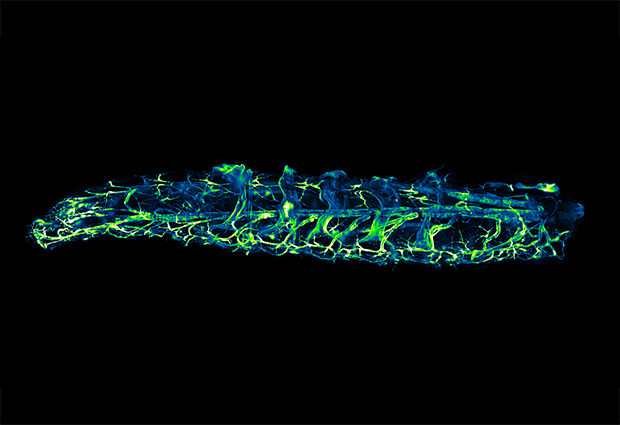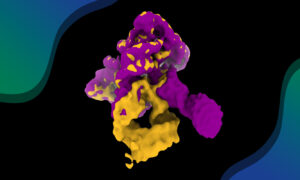
Breathe in, breathe out

Inhale. Your diaphragm contracts, your lungs expand, and air flows into your body. The alveoli in your lungs extract oxygen, exchanging it for CO2. Your diaphragm relaxes and your lungs shrink. Exhale.
Just like humans, all animals need oxygen to survive. But some, like insects, lack lungs altogether. How do they breathe?
Air enters an insect’s body through openings called spiracles and flows into a dense network of branching tubes – the tracheae. Oxygen diffuses through the tracheal system into ever-smaller tubes and reaches every cell in the insect’s body.
This image shows the tracheal system of a live fruit fly larva, about 1 mm in length, recorded using a multiview light-sheet microscope (MuVi-SPIM) – a specialised type of microscope developed at EMBL. The larva expresses a fluorescent protein at varying intensities (here, yellow is more intense than green or blue). As part of EMBL’s mission to crack the code of life in all its complexity, Daniel Rios from the Leptin Group and Dimitri Kromm from the Hufnagel Group used this advanced microscope to investigate the dynamics of tracheal cells during development.
Credit: Dimitri Kromm, Daniel Rios-Barrera/EMBL
If you have a stunning picture of your science, your lab or your site, you can submit it here.



